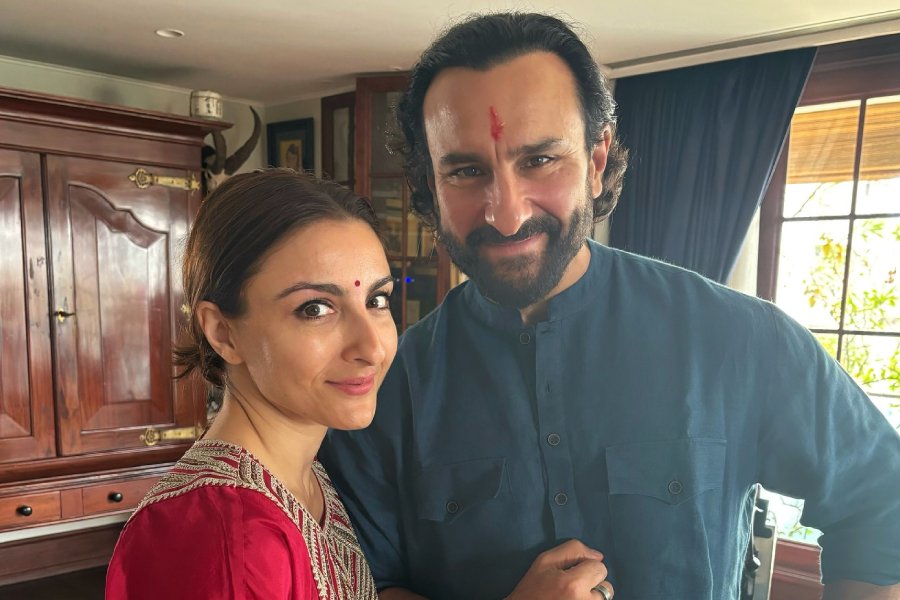Until September 2, 2024, most of the world did not really know what Gisèle Pelicot looked like.
There were almost no photographs of Pelicot, a 72-year-old grandmother, online. She wasn’t on social media. No one except her friends and family knew she had an orange Louise Brooks bob and a penchant for round John Lennon sunglasses.
But by Thursday, as Pelicot stood with her head held high in a courtroom in Avignon, France, as the verdicts in the harrowing four-month rape trial of her ex-husband and 50 other men were read, she had become the image of bravery across the globe.
Her face has stared out from posters across France and been pasted on the sides of buildings. It graced the digital cover of Vogue Germany and was used on a mock cover of Time’s person of the year issue. It has become the symbol of her own horrific experience, of course, but also that of every woman who was rendered helpless, lied to and abused. As one of her lawyers, Stéphane Babonneau, said, Pelicot’s face, with its lack of artifice, has become the expression of the fact that “the shame has switched sides”.
Rarely has someone who was so literally objectified — turned into a rag doll for men to violate — been able to so fully take back control of her own objectification and turn it into a picture of empowerment.
In this, Pelicot’s image has become one in a long line of images that have transcended a unique story to become visual shorthand for a collective turning point. Think of the young man in the white shirt standing in front of a tank in Tiananmen Square in 1989, or the woman in the red dress being tear-gassed during anti-government demonstrations in Turkey in 2013, or the woman in the sundress standing before a line of police in riot gear during a Black Lives Matter protest in Baton Rouge, Lousiana, in 2016.
Almost always, these photographs capture people who look normal displaying extraordinary courage in an extraordinary time. And while Pelicot did not anticipate how much of a clarion call her face would become, Babonneau said, she knew that from the moment she made the decision to allow her trial to be public, rather than a closed-door hearing, people would be looking.
“Every woman who has had to endure what she had to endure and takes the stand knows she is going to be observed, not just according to what she says, but how she looks,” Babonneau said. Specifically, he added, that she is going to be judged on whether she meets social and cultural “expectations of what a victim looks like.” Or, for that matter, what a hero looks like. Pelicot, he said, wanted to offer a different example.
Envision a woman who may have been a victim but was not “powerless” anymore. A woman whose former husband may have destroyed her life but who did not succeed in destroying her. A woman who was often described, according to Babonneau, as looking “very French”, in that indescribable, you-know-it-when-you-see-it way.
As LaDame Quicolle, an artist who created a large-scale portrait of Pelicot and posted it on the streets of Avignon, Lille, Paris, and Brussels, said, it was precisely because “Gisèle Pelicot is an ordinary woman” that her image was so striking. Put another way: While the men who abused her have been collectively called “Monsieur-Tout-le-Monde”, or Everyman, because they appear so average, Pelicot has taken her own averageness and made it part of her superpower.
Whereas most of the women who came forward during France’s #MeToo movement were well-known figures in the worlds of fashion and film, Pelicot, LaDame Quicolle said, “could be our mothers”. From Day 1 of the trial, Pelicot appeared put together, but simple. Often, she wore a white scarf draped around her neck. The colours she chose were sedate. She didn’t wear obvious makeup, but she looked well groomed. She looked recognisable.
That is why, through days of testimony from her abusers, she wore a silk scarf with a print created by Aboriginal women in Australia and sent to her as a gesture of solidarity. In her familiarity, she contained multitudes. In her unstinting reflection, women saw themselves.
New York Times News Service











